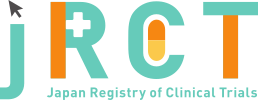臨床研究等提出・公開システム
|
July. 29, 2023 |
|
|
Jan. 31, 2024 |
|
|
jRCT2031230267 |
A Phase III b, single-arm, multicenter, optimal dose finding study to assess the efficacy and safety of P1101 in Japanese patients with polycythemia vera (PV). |
|
A Phase III b study to evaluate P1101 in Japanese PV patients |
Kawase Hiroaki |
||
PharmaEssentia Japan KK |
||
1-3-13 Motoakasaka, Minato-ku, Tokyo |
||
+81-3-6910-5103 |
||
hiroaki_kawase@pharmaessentia.com |
||
Kawase Hiroaki |
||
PharmaEssentia Japan KK |
||
1-3-13 Motoakasaka, Minato-ku, Tokyo |
||
+81-3-6910-5103 |
||
hiroaki_kawase@pharmaessentia.com |
Not Recruiting |
July. 29, 2023 |
||
| 20 | ||
Interventional |
||
single arm study |
||
open(masking not used) |
||
uncontrolled control |
||
single assignment |
||
treatment purpose |
||
1. Male or female patients >=18 years old at the time of informed consent to participate in the study |
||
1. Any contraindications to interferon alfa or hypersensitivity to interferon alfa |
||
| 18age old over | ||
| No limit | ||
Both |
||
Polycythemia Vera |
||
The subjects will be treated with P1101, starting at a dose of 250 micrograms. The dose of P1101 will be increased to 350 micrograms 2 weeks later and to 500 micrograms another 2 weeks later, and then P1101 will be administered at a fixed dose of 500 micrograms throughout the treatment period. Although the dose may be reduced to the prior dose for reasons related to the safety or tolerability, the increased dose should be preferably maintained throughout the treatment period. |
||
Myeloproliferative nemoplasms |
||
Primary Efficacy Endpoint (at Week 24): |
||
Secondary efficacy endpoint: |
||
| PharmaEssentia Japan KK |
| Institutional Review Board of Juntendo University Hospital | |
| 3-1-3 Hongo, Bunkyo-ku, Tokyo 113-8431, Tokyo | |
+81-3-3814-5672 |
|
| jcrtc_operation@juntendo.ac.jp | |
No |
|
| ClinicalTrials.gov (U.S. National Institutes of Health) |
none |
